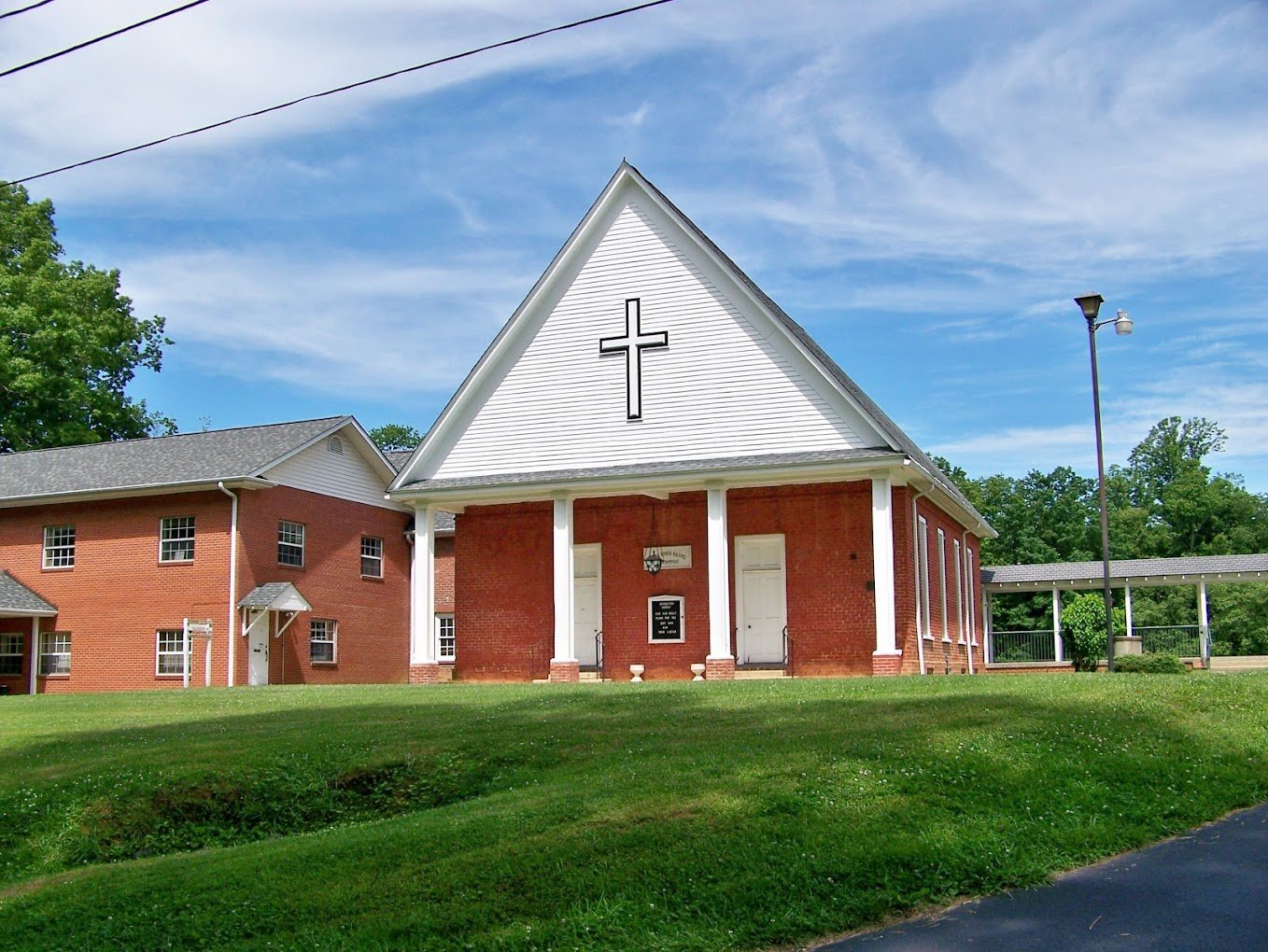
Mills River United Methodist Church History
The exact date of organization of Mills River Chapel, later changed to Mills River Methodist Church, is not known, but a search of Bishop Francis Asbury’s Journal, a Circuit Rider Preacher, gives evidence that it must have been before 1800.
Items in the Journal are as follows:
“November 13, 1800-Crossed King’s Ferry on French Broad River and forded Mills River.”
Asbury records stopping at Mills River and preaching in 1800.
“October 12, 1801-We found lodging at Major Brittain’s near the mouth of Mills River. After having a sermon at Morrough’s (Murray’s) from N. Suethen, myself and James Douthat gave an exhortation.”
In August, 1826 Col. John Clayton, for a price of ten shillings deeded the present site to Trustees: John Murray, Phillip Brittain, John Johnson, Frazier Banning and John Clayton. Mills River Methodist church was organized and occupied a frame building on the present site until shortly before the Civil War, when it was torn down and the present structure was started.
The bricks were made by a black slave named Josh King who is buried in our cemetery. Some were made on what was the Jaynes place near Kings Bridge on Hwy 191 and some on the Johnson Farm on Jeffress Road. Dan Johnson and his younger brother, Liston, who were barefooted, hauled the first load of bricks with a yoke of oxen.
The brick construction of the Chapel is notable because brick was rarely used in antebellum North Carolina usually being reserved for substantial buildings with public functions, such as courthouses and jails.
A Mills River carpenter, Mr. Americus Barnett, built the Church with the help of others, among them the great grandfather of Mrs. Sue Osborne, Phillip Sitton and his sons, and members of the Johnson family. Mr. Barnett broke his leg during the construction and was not able to continue working so the building was not completed until after the close of the Civil War.
During the time of the war and until the completion of the building services were held in the Presbyterian Church, which was then known as Mills River Academy. Mills River Methodist Church was on a circuit until 1950 when it was made a station. C. Edward Roy was our minister at that time.
The pews are made of Chestnut and all the nails were hand made. The glass cross was given to the church by the Johnson family in the early 1940’s.
A small fellowship hall, six classrooms, and a heating system were added in 1945 and dedicated in 1947. An organ was purchased in 1953 and an Everett piano in 1965. A Kawai piano was given to the church in 1973.
Many renovations were done during the years, the funds coming from special offerings and gifts and bazaars and memorials to former members. To name a few, new pulpit furniture and communion rail, new shutters on windows, enlarging and paving the parking lot, replacing the old pine flooring and heating plant. Carpeting the aisles and pulpit areas, reroofing the Sanctuary, installing fans in Sanctuary. On February 24, 1985 our congregation enjoyed a special service of musical praise to consecrate a new church organ, a beautiful pipe-electronic organ. An organ fund has been started in the late 1970’s and the indebtedness on the organ was paid in full by September 15, 1985.
Three pulpit Bibles have been given to the Chapel, the first by Mrs. Waitstill Johnson Murray, the second by Mr. M.M. Johnson, and our present one by Carl and Lois Cothran in 1960.
Dr. Norton made a table for the old Bible assisted by Bob Cathey and Joe Lee Heffner. Bob Cathey made the rack in the back of the church that once held copies of The Upper Room.
Land for the first Parsonage was given by Mr. Andrew Warlick. The building was in use from 1892 to 1949. The second Parsonage was built in 1951 on land purchased by the Fellowship Class and was in use until 1965 when the third Parsonage was built. It is located on Parsonage Drive in Clement Hills. The land for the parsonage was given by Robert E. Clement and his wife Elsie Clement. A special service of dedication was held on February 28, 1971 when Rev. Robert E. Early was pastor. This parsonage was sold in 2022. The church now giving pastors a housing allowance.
Additional land for the Cemetery was given in 1964 by Dr. and Loa Betts. A trust fund for Cemetery upkeep was also started that year. Upon the death of two dedicated couples, Hubert and Myrtle Greenwood, and Mr. and Mrs. Willie Corpening, friends of the church, their estates were willed to our church and placed in trust for church use, which has been designated for the upkeep of grounds and building or replacements.
Plans for an Education Building were started while Rev. Bob Walters was pastor and continued through the pastorate of Rev. Marion Workman and finally built during the first year of Rev. V.R. Masters’ pastorate. One room was dedicated to Mrs. Eloise M. Johnson and the Fellowship Hall to Mrs. Addie C. Greenwood.
In 1953 plans for further additions to the educational building were begun. These plans became a reality in 1958 with a fellowship hall, kitchen, restrooms, pastor’s study and six classrooms. Another building and expansion program was completed in 1984 adding a large fellowship hall, small fellowship hall, nursery, library, choir room, two offices and 10 classrooms. The building committee for this project included: Dr. Howard B. Norton, Joe Lee Heffner, Tom Dalton, Mazie Crook, Dorothy McCracken, Richmond Meadows and Jim Smith. Of particular note is the dedication of the small fellowship hall in memory of Floyd and Sue Osborne, long time, faithful members of the church. The total cost of $175,000 was paid in full with a note
burning held on September 16, 1984.
On December 2, 1988 Mills River Chapel received a special honor when it was placed on the National Register of Historic Places. Work began in 1986 when Rev. Bob Roach and Sybil Cathey began seeking the nomination to be placed on the National Register. A special bronze plaque can be found on the front of the Chapel.
In July 1990 more Sunday School rooms were added, enlarged kitchen, installed a more adequate heating system and added air conditioning costing $270,000.
Our present sanctuary was five years of planning and fund raising with a concertation service on December 9, 2001. The entire project came with a price of $2.8 million including rebuilding the parking area, new lighting and landscaping around the building. The cross suspended over the chancel is a simple wrought iron creation, but it represents the hopes and ambitions of a congregation cherishing its past but looking toward its future.
The sanctuary has a seating capacity of 450 and features seating in a semi-circular pattern of oak pews around the altar area with space for the choir behind the altar. A glass cupola over the chancel area which can be lit at night to serve as a beacon and a floor-to-ceiling stained glass window behind the altar flood the sanctuary with light. The stained glass window was given by Marge Bennett, her daughter Sally Heichelbech and her granddaughter Janet Walczak.
The new brick matches the old brick and the cross theme carries into the new façade. Bob Carter was chairman of the building committee along with other members: Harold Boyd, Sammy Brittain, Ray Bryson, Ken Calhoun, Lynn Hinkle, Marge Noble, Dr. Norton, Rev. Jock Ollis, Jerry Sipes, Kathy Trantham, and Carol Weast.
The Fellowship Hall under the sanctuary was completed and dedicated March 5, 2006. This project could never have been completed without God’s will working through the numerous donors, contractors, and especially the volunteers bringing their service, skills, gifts and prayers. This building committee included: Allen Combs, Jack Combs, Ray Bryson, Ramona Bryson, Bob Noble, Marge Noble, Chris Jones, Dan Poeta, Eddie Ellis, James Horton, Pam Pate, Bob Martin, Anthony Chelena, Doc Moore, Craig Kirkpatrick, James Holmes, Andy Carnes, and Harold Boyd.
We at Mills River United Methodist Church gather in these beautiful facilities to worship and glorify God and on Monday and every weekday go forth to Know Christ and make Christ known as we worship, grow, and serve together.
Delores Cathey Meadows - July, 2024
After 24 years the faithful members of Mills River United Methodist Church paid off the $2.8 million dollar debt on the sanctuary.
The morning service and note burning was Sunday, August 17, 2025. Rev. Jock Ollis who served the church from 1995-2002 preached a sermon on "Reclaiming the Great Commission". He started his pastorate in the Chapel and preached the first sermon in the new Sanctuary December 9, 2001.
The choir sang "Glory to the Son of God" which was the first anthem in the new sanctuary.
Rev. A. J. Thomas from the United Methodist Foundation offered Words of Celebration.
Pastor Luke Christy led the congregation in the Act of Dedication followed by Rev. Ollis burning the note with a standing ovation and applause from all the congregation in thankfulness for all of God's blessings.
